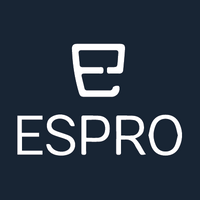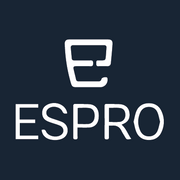Frequently Asked Questions
Common FAQS
The Golden Ratio: 1 gram of coffee per 15-18 milliliters of water. We write this in shorthand as 1:15 to 1:18 (coffee to water). For more information on this topic, we have a full blog post on the subject .
The ESPRO press is similar to a French press. The difference between our press and other French presses is that ours delivers a much finer double-filtration, leading to what we believe is the cleanest, smoothest cup of French press coffee available. Grounds are placed into the vessel along with water at the desired temperature. After brewing, the filters are pushed down to separate the grounds from the brewed coffee using the silicone seal around the filter.
Check your grind size, making sure that it is coarse, then ensure your filters are properly cleaned. If you’re noticing that it’s getting hard to press the filters down, they might be clogged with fine coffee particles or residue. ESPRO's double micro-filters use a very fine stainless steel mesh which is designed to filter coarse cofffee particles. If your coffee is too finely ground, it may clog the filter screens, making it difficult to press.
Do not place the Press P7 on the stovetop. The double-walled insulation makes it impossible to heat the press from the stove and the direct heat will likely melt the press, which is not covered under warranty.
Many will use tap water brought to a boil however many baristas and experts prefer to use filtered water. Your choice. Brew it your way.
ESPRO Press FAQS
Yes, every ESPRO press comes with two micro-filters. A smaller filter is nested into a secondary filter, and they can be separated with a simple twist. We also make a tea-specific micro-filter, and sell replacement coffee double micro-filters separately, if you require a new one.
The ESPRO press is similar to a French press. The difference between our press and other French presses is that ours delivers a much finer double-filtration, leading to what we believe is the cleanest, smoothest cup of French press coffee available. Grounds are placed into the vessel along with water at the desired temperature. After brewing, the filters are pushed down to separate the grounds from the brewed coffee using the silicone seal around the filter.
Check your grind size, making sure that it is coarse, then ensure your filters are properly cleaned. If you’re noticing that it’s getting hard to press the filters down, they might be clogged with fine coffee particles or residue. ESPRO's double micro-filters use a very fine stainless steel mesh which is designed to filter coarse cofffee particles. If your coffee is too finely ground, it may clog the filter screens, making it difficult to press.
Do not place the Press P7 on the stovetop. The double-walled insulation makes it impossible to heat the press from the stove and the direct heat will likely melt the press, which is not covered under warranty.
Our patented double micro-filters stop your coffee from extracting when your plunger is pressed. This creates a separation between the grinds and your brewed coffee. The liquid that’s trapped under the filter is sitting in with your coffee grinds, continuing to brew – so for this reason, we don’t recommend drinking it.
To capture the last bit of liquid in your ESPRO press that’s trapped below the filter (once your press is emptied of brewed coffee): try lifting the plunger, tilting your press to pour out, and pressing the plunger carefully while pouring. This allows you to access the last bit of liquid.
The Press P7 and the Press P6 are both double-walled insulated stainless steel. The Press P7 is available in both 18 oz and 32 oz sizes, while the P6 is just 32 oz. The plastic handles on the press rod and body of the P6 has a stylish hexagonal design, whereas those parts on the P7 are stainless steel and rounded. The P7 also comes in a couple additional colors/finishes than the P6.
Travel Press And Ultralight FAQS
The Ultralight holds 16 oz of liquid, doubles as a water bottle, has a loop handle and is 30% lighter than the Travel Press. The Travel Press holds 14 oz of liquid.
The Ultralight Press brews about 12 oz of coffee and the Travel Press brews about 10 oz of coffee.
Yes, they are compatible—the Travel Press and Ultralight Press use the same size coffee micro-filters, tea micro-filters, and paper filters.
Deep Clean FAQS
We teamed up with Urnex to make a cleaning solution that is completely safe. There are two ingredients that make up Deep Clean: Trisodium phosphate and Sodium percarbonate.
We recommend using our Deep Clean for a monthly deep soak to eliminate any lingering flavours, odors or build up.
Filter FAQS
Yes, you can. Make an ultra-clean, oil-free pour over-style coffee by adding a paper filter to any ESPRO press. Since paper absorbs the aromatic oils that many people love in a French-press-style coffee, expect the taste to vary with and without a paper filter.
The double filter allows for two stages of filtering. The outer basket-shaped filter is slightly more coarse, and it separates the majority of the grinds from the brewed coffee. The inner basket-shaped filter completes the job, with a much finer mesh than any other press out there. The result is ultra-clean, grit-free coffee.
Each filter comes into contact with coffee grounds, and therefore needs to be taken apart and individually cleaned to ensure you’re getting the best cup of coffee possible. After each use, separate them with a twist and wash both filters thoroughly with soap and water. Gently wash the mesh, removing all visible grit. We recommend using a cloth or sponge.
You can get replacement parts and filters for ESPRO products, on our website. The filter design has changed over the years however all new filters are backwards compatible with older presses.
Our filters have a polypropylene cage that’s BPA, BPS, and phthalate free. The seal is silicone.

